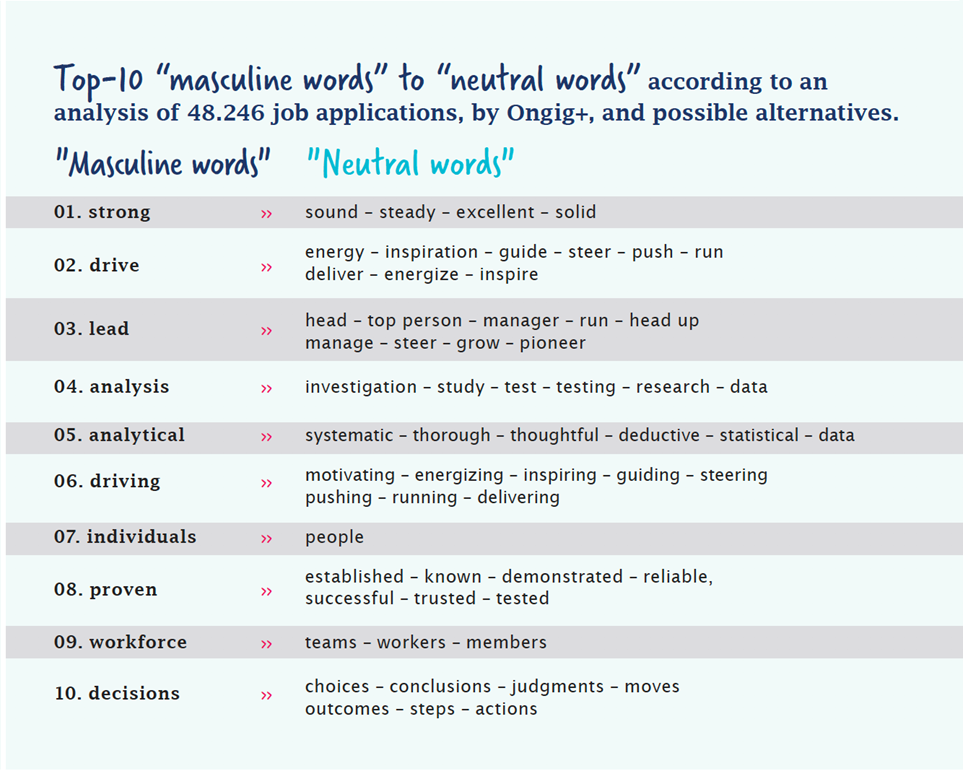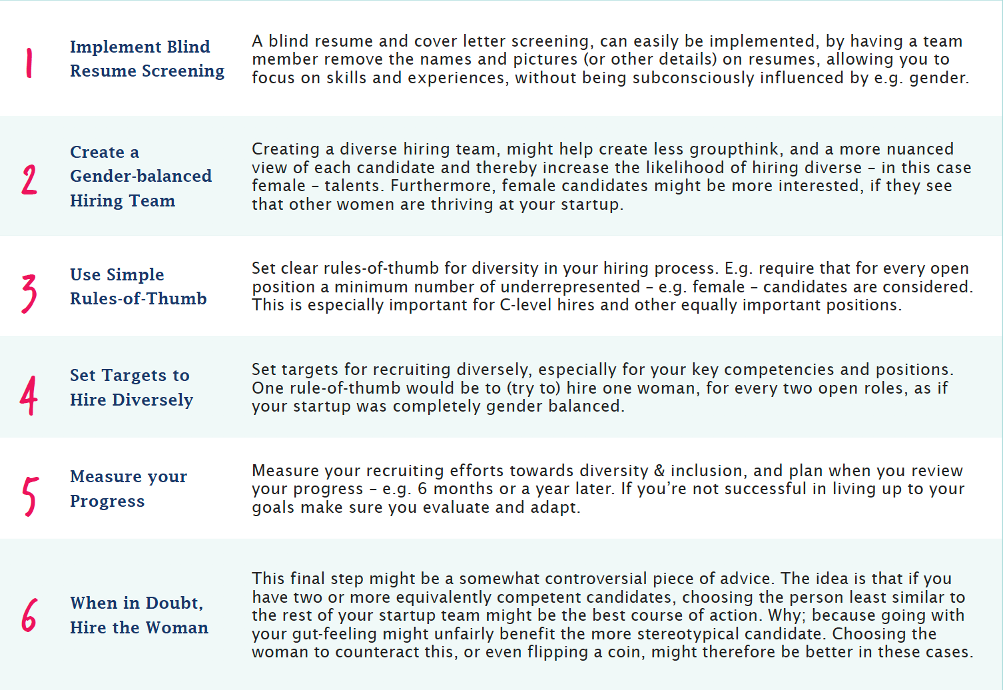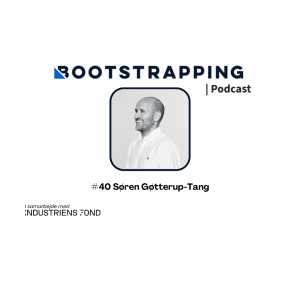This is no. #3 article in a series about the lack of gender balance within the Danish startup eco system, Bootstrapping are publishing as warmup for the launch of the guide Return on Diversity tomorrow November 19th. The guide is a collaboration between Bootstrapping, Female Founders of the Future and Nextwork sponsored by Danske Bank and ITB, and supported by Vækstfonden and Danish Business Angels. It’s mission; to provide tools and guidelines for founders, investors and for those who organise investments, on how to help fix the gender imbalance in the Danish startup ecosystem.
Potential: Achieve higher performance, by hiring from a diverse pool of talents
Having a strong team in your startup is key to success. And in order to get this strong team, you need to attract the right people. If you can widen your pool of potential candidates by having a broad appeal, e.g. to both male and female candidates, young and old, or from different educational backgrounds, you have a greater chance of recruiting the very best.
Problem: Unintended bias in job descriptions and postings
How we describe a job affects who wants to apply. Searching for a “rock star”, or “ninja”, might not be equally attractive across the breadth of relevant talents. Since most startups have male founders, and the startup ecosystem is predominated by men, the language in job postings can sometimes be significantly more appealing to male candidates, than female.
Solution: De-biasing your job postings
We propose two steps to make your job posting attractive to as many relevant talents as possible. There is no truly neutral way of describing a job, and being creative about how you describe a position, might be necessary and beneficial to attract more and better talents.
Review the job posting for gendered words
As a first step, go through your first draft of a job posting, and look for language that might have an imbalanced appeal. This can be difficult to spot, and having a sparring partner is often a great idea. You can consult example lists of potentially problematic words, as provided below by Ongig+. Or you could even run the description through a gender-bias control software, such as the Gender Decoder, Develop Diverse or Ongig’s Text Analyzer.
Focus on skills instead of requirements
According to a statistic from Hewlett Packard, men apply for a job when they meet only 60% of the qualifications, whereas women more often apply only if they meet 100% of them. To attract more female applicants, and to circumvent this bias, we suggest applying a laser-like focus to your job description. That is, to directly outline the most important skills the position requires – the “must-haves” instead of the “nice-to-haves”. By doing this, you gain access to more talents that meet the most important needs of your startup.
“Startups have the privilege of starting with a blank slate, so to speak, which gives them the opportunity to build a more diverse organization from day 1, before they get stuck in the inequalities that we know from the more established companies and which require a lot of effort to change.”
– Søren Kofoed-Sørensen, Head of Danske Bank Business
Potential: Increase your odds of hiring the best candidate
If you are successful in attracting candidates from a large and diverse pool of talents, making sure that you also hire the best, depends on high quality hiring decisions. By being aware of potential bias, and minimizing it, you enhance your chances of hiring the right candidate, male or female.
Problem: Bias in reviewing applications and applicants
Decision making in hiring processes is prone to at least some bias. Especially if review of applications and applicants is based on a low degree of structure. And ultimately, if your hiring decision process is biased, your hiring will be worse for it.
Solution: Six steps for reviewing applications and applicants without bias
To be aware of and try to reduce bias when reviewing and evaluating potential candidates, we suggest the following six steps.
“Diversity is not a quick fix. It takes time and effort to change old habits and ways of doing. However, it’s far from rocket science. All it takes is the will to act.”
– Natasha Friis Saxberg, CEO, IT-Branchen
Please note: What you have been reading now is just a short line up of all the points, views and angles our guide Return on Diversity deals with. Return on Diversity not only sums up the problems within the startup eco system; we propose and deliver the solutions. Follow this series. Together we will unlock the untapped potential in the Danish Startup Ecosystem. Our articles about diversity will be free to read and in English – and our guide Return on Diversity is as well: Our hope is to reach out to not only Danish founders, investors and VCs about the lack of diversity within the ecosystem, but to all the Nordic countries, so the lack of diversity can be broadly discussed – and acted on.









